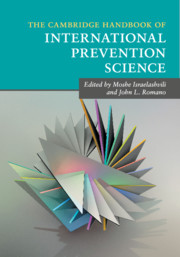Book contents
- The Cambridge Handbook of International Prevention Science
- The Cambridge Handbook of International Prevention Science
- Copyright page
- Dedication
- Contents
- Figures
- Tables
- Contributors
- Foreword
- Acknowledgments
- The Nature of Prevention Science
- Part I The Essence of Prevention Science
- Part II The Globalization of Prevention Science
- Asia & Australia
- 23 South Korea’s Efforts to Prevent Internet Addiction
- 24 Implementation of an Early Childhood Prevention Program from a Health Care to Community-Based Setting in Singapore
- 25 Prevention of Illegal Substance Use and Abuse in Bhutan
- 26 Promoting Coping Skills in Children, Adolescents, and Parents
- 27 Prevention of Drug Abuse in Chinese Adolescents in Hong Kong
- 28 Suicidal Behavior and Its Prevention in India
- 29 Prevention Psychology and Counseling Services in Thailand
- North, Central, & South America
- Europe
- Africa & the Middle East
- The Future of Prevention Science
- Index
- References
29 - Prevention Psychology and Counseling Services in Thailand
Happy and Healthy University Students
from Asia & Australia
Published online by Cambridge University Press: 21 January 2017
- The Cambridge Handbook of International Prevention Science
- The Cambridge Handbook of International Prevention Science
- Copyright page
- Dedication
- Contents
- Figures
- Tables
- Contributors
- Foreword
- Acknowledgments
- The Nature of Prevention Science
- Part I The Essence of Prevention Science
- Part II The Globalization of Prevention Science
- Asia & Australia
- 23 South Korea’s Efforts to Prevent Internet Addiction
- 24 Implementation of an Early Childhood Prevention Program from a Health Care to Community-Based Setting in Singapore
- 25 Prevention of Illegal Substance Use and Abuse in Bhutan
- 26 Promoting Coping Skills in Children, Adolescents, and Parents
- 27 Prevention of Drug Abuse in Chinese Adolescents in Hong Kong
- 28 Suicidal Behavior and Its Prevention in India
- 29 Prevention Psychology and Counseling Services in Thailand
- North, Central, & South America
- Europe
- Africa & the Middle East
- The Future of Prevention Science
- Index
- References
- Type
- Chapter
- Information
- The Cambridge Handbook of International Prevention Science , pp. 683 - 700Publisher: Cambridge University PressPrint publication year: 2016
References
- 1
- Cited by



